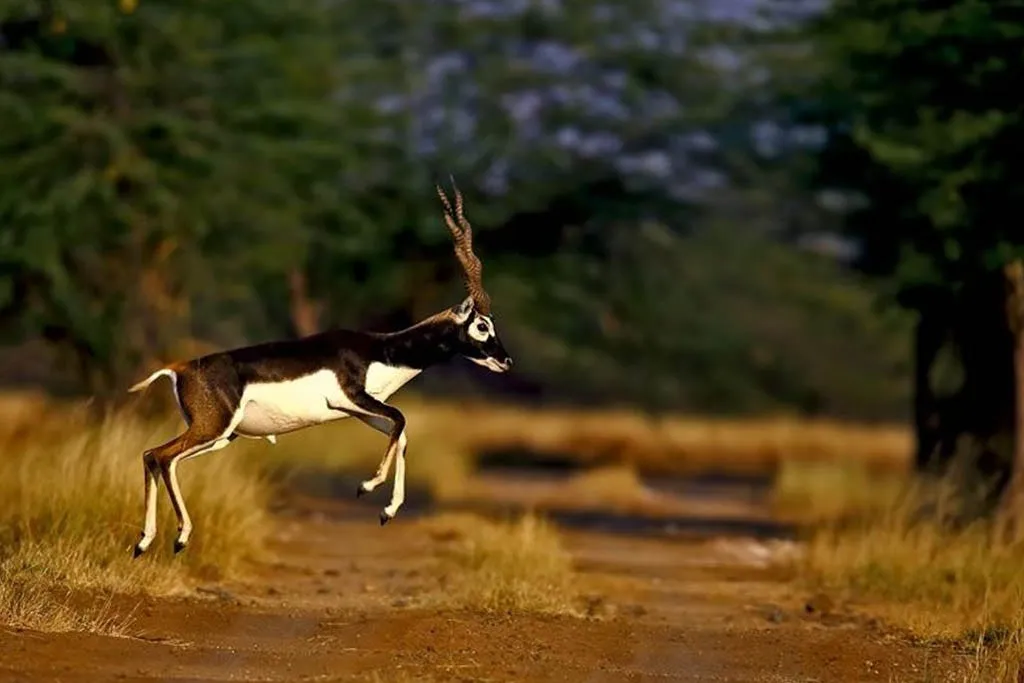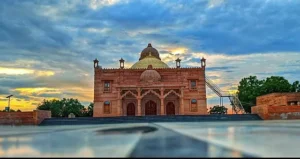Table of Contents
ToggleIntroduction
Bishnoi Villages in Protecting Blackbucks The Bishnoi community, hailing from the arid Thar Desert of Rajasthan, India, has a profound and unwavering commitment to environmental conservation. This sect, founded by Guru Jambheshwar in the 15th century, adheres to 29 principles that emphasize the sanctity of all living beings and the natural world. Among their many contributions to environmental preservation, their role in safeguarding the endangered blackbuck stands out as a testament to their unwavering dedication.
The Bishnoi Philosophy and Blackbuck Conservation
The Bishnoi philosophy, rooted in the principles of non-violence (ahimsa) and reverence for all life forms, has fostered a unique bond between the community and the blackbuck. These graceful antelopes, with their distinctive spiral horns, have been revered by the Bishnois for centuries. They consider the blackbuck to be a sacred animal, believing it to be an embodiment of their revered Guru Jambheshwar.

Historical Significance of Blackbuck Conservation
The Bishnoi’s commitment to blackbuck conservation has historical roots. In 1730, a Bishnoi woman named Amrita Devi Bishnoi led a group of 362 villagers to sacrifice their lives in protest against the felling of sacred Khejri trees, which provided sustenance to both humans and wildlife, including blackbucks. This act of bravery and sacrifice has become a symbol of environmental activism and has inspired generations to follow in their footsteps.
The Bishnoi Approach to Blackbuck Conservation
The Bishnoi community employs a multifaceted approach to protect blackbucks:
- Religious Devotion: The deep-rooted religious belief in the sanctity of the blackbuck motivates the Bishnois to protect these animals with utmost care. They consider it a sacred duty to safeguard the blackbuck population.
- Community Vigilance: Bishnoi villages form a network of vigilant eyes, constantly monitoring the blackbuck herds. They report any threats or poaching activities to the authorities, ensuring timely intervention.
- Habitat Protection: The Bishnois actively protect the habitat of blackbucks, including grasslands and water sources. They often plant trees and create artificial water bodies to sustain the ecosystem.
- Education and Awareness: The community members educate younger generations about the importance of blackbuck conservation, fostering a sense of responsibility and environmental consciousness.
- Collaboration with Authorities: The Bishnois collaborate with forest officials and wildlife conservation organizations to strengthen their efforts. They share information about blackbuck movements and potential threats, facilitating joint conservation initiatives.
Challenges Faced by Bishnoi Communities
Despite their unwavering dedication, the Bishnoi communities face several challenges in their conservation efforts:
- Poaching: Illegal hunting and poaching remain significant threats to blackbuck populations.
- Habitat Loss: Urbanization, industrialization, and agricultural expansion encroach upon blackbuck habitats, leading to fragmentation and degradation.
- Climate Change: Changing climatic conditions, such as erratic rainfall patterns and extreme weather events, can adversely impact blackbuck populations.
- Lack of Recognition and Support: While the Bishnois have been instrumental in blackbuck conservation, they often lack adequate recognition and support from the government and other stakeholders.
The Future of Blackbuck Conservation
To ensure the long-term survival of blackbucks, it is imperative to address these challenges and strengthen conservation efforts. The following strategies can contribute to the future of blackbuck conservation:
- Strengthened Law Enforcement: Stricter enforcement of wildlife laws and increased penalties for poaching can deter illegal activities.
- Community-Based Conservation: Empowering local communities, such as the Bishnois, to play an active role in conservation can lead to more effective and sustainable solutions.
- Habitat Restoration and Protection: Implementing measures to restore and protect blackbuck habitats, including creating wildlife corridors and buffer zones, is crucial.
- Scientific Research and Monitoring: Conducting scientific research to understand the ecological requirements of blackbucks and monitoring their populations can inform effective conservation strategies.
- Public Awareness and Education: Raising public awareness about the importance of blackbuck conservation and the role of the Bishnoi community can foster greater support and participation.
Conclusion
The Bishnoi villages stand as beacons of hope in the realm of wildlife conservation. Their unwavering dedication to protecting blackbucks serves as an inspiration to the world. By understanding their unique approach and the challenges they face, we can work together to ensure the future of these magnificent creatures and the rich biodiversity they represent.
FAQs
Are there any safety concerns during a Bishnoi village safari?
Bishnoi villages are generally safe for tourists. However, it's always advisable to take standard safety precautions, especially when venturing into the desert.
Can I interact with the blackbucks?
While it's tempting to get closer to the blackbucks, it's crucial to maintain a safe distance and avoid disturbing them.
What is the best way to spot blackbucks?
The best way to spot blackbucks is to join a guided safari with an experienced local guide. They know the best locations and timings for wildlife sightings.
Are there any accommodation options in Bishnoi villages?
Yes, there are various accommodation options available in Bishnoi villages, ranging from budget-friendly homestays to luxury resorts.







